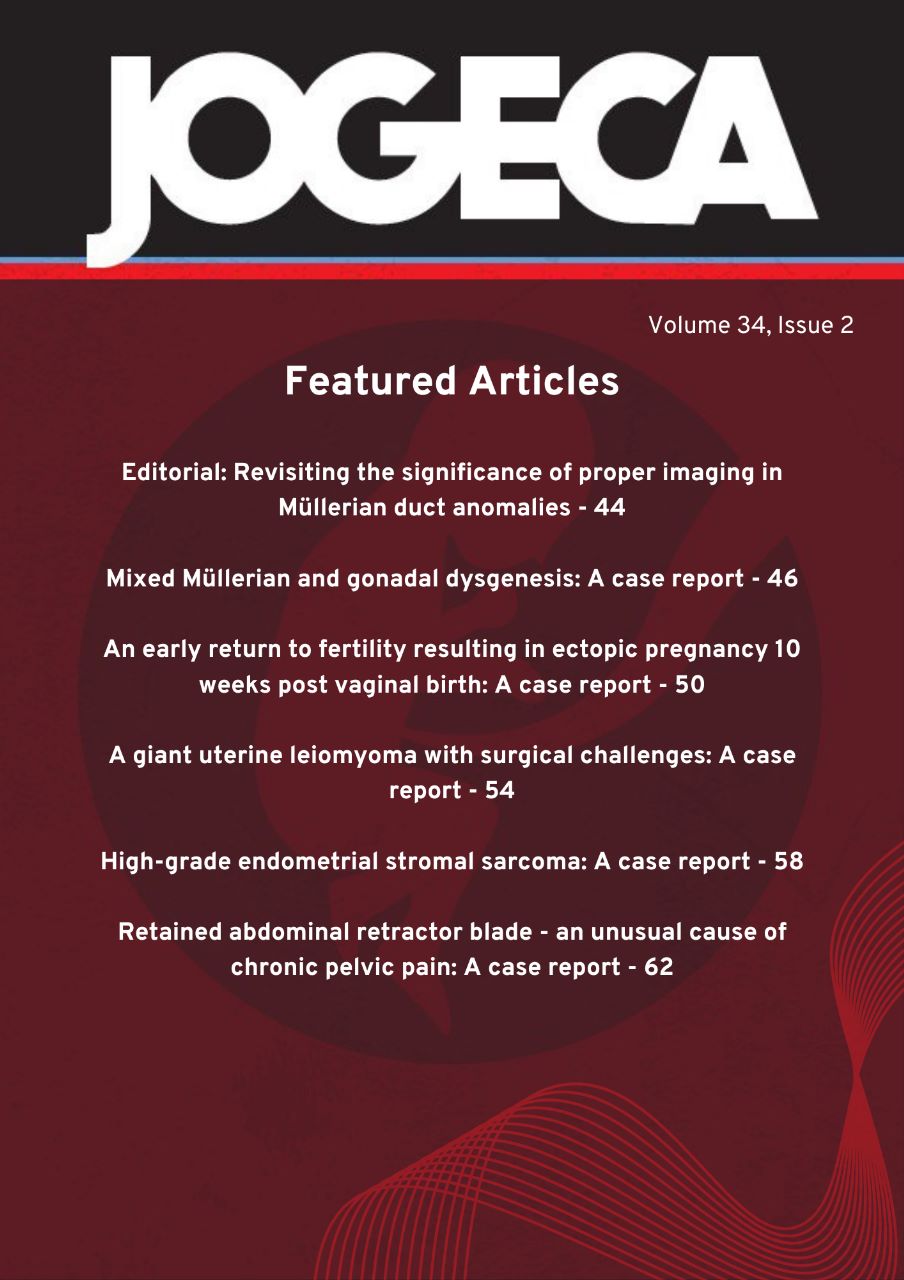High-intensity frequency ultrasound: Noninvasive targeted therapy, the new vogue in globus treatment of benign and cancerous solid tumors and rejuvenation procedures
DOI:
https://doi.org/10.59692/jogeca.v36i1.291Abstract
Background: High-intensity frequency ultrasound (HIFU), a noninvasive ultrasound beam is focused on
an exact tissue area that requires treatment. The highly focused energy from ultrasound causes the
temperature of the tissue to rise, and the heat ablates the targeted tissue area. This therapy is gaining
popularity and momentum globally for treating of brain, breast, prostate, thyroid, liver, kidney, bone
tumors, fibroids, adenomyosis, and endometriosis. Additionally, it is used in placenta accreta syndrome
and cesarean scar pregnancy. Cosmetics include rejuvenation of connective tissue on the face and
vulva. Exploration of uses for the treatment of postpartum hemorrhage and cervical cancer is underway.
Methods: An orientation meeting was held among Kenyatta National Hospital and the University of
Nairobi multidisciplinary clinical and administrative personnel. This was followed by a study tour to China
that engaged academia, researchers, clinicians, and radiologists to gain a first-hand understanding of the
invention process, setup for procedures, and innovative applications of HIFU in both private and public
health institutions.
Results: Promising success data are generated in high-income counties. Recently introduced in West
Africa with the possibility of introduction in Eastern Africa.
Conclusion: Noninvasive targeted therapies are the new vogue, and there seems to be a globus
application for HIFU. Acquisition of this technology, addressing the normative environment, competencies
of multidisciplinary HCP, and research are needed in low- and middle-income countries. This novel
technology can be cost-effective for the health system and improve patients’ experience. Furthermore, a
combination of machine learning and clinical radiological imaging can be used as a predictor of tumor
regrowth potential.
Downloads
Published
How to Cite
Issue
Section
Categories
License
Copyright (c) 2024 The authors.

This work is licensed under a Creative Commons Attribution 4.0 International License.




